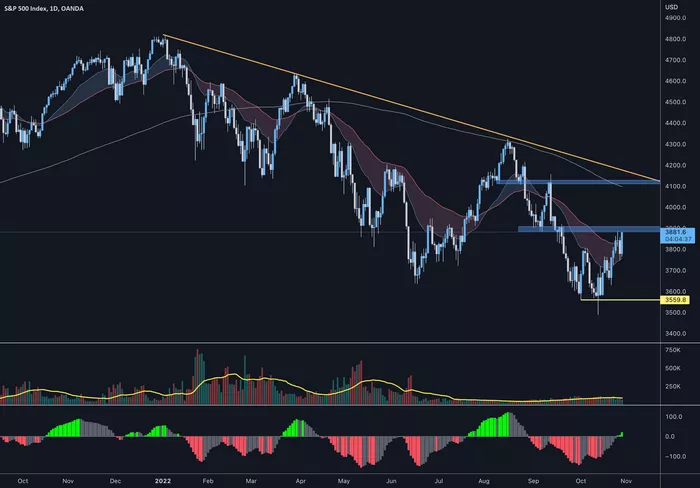Investing in stocks can be a complex and overwhelming endeavor, especially for those who are just starting. The ability to choose the right stocks at the right time can significantly impact the success of your investment portfolio. Fortunately, various tools and simulations are available today that help investors make informed decisions, improve their strategies, and practice without risking real capital.
In this article, we will explore the tools provided by stock simulation platforms that can aid investors in making better stock choices. These tools simulate real-world stock market conditions and provide a safe environment for learning, testing strategies, and gaining experience. We will cover the key tools and features of stock simulation platforms and how they can help both beginner and experienced investors choose the right stocks.
What Is a Stock Simulation?
A stock simulation is an interactive tool designed to mimic real stock market conditions. It allows users to practice buying, selling, and managing stocks without risking actual money. Through a stock simulation, investors can learn about market dynamics, test different strategies, and gain confidence in making investment decisions. These simulations are often used by individuals, educational institutions, and trading firms to develop skills and prepare for real-world stock market participation.
Stock simulations are typically designed to replicate real-time market data, including stock prices, company news, and financial indicators. They can be used on both desktop platforms and mobile applications, offering a variety of resources to help investors make informed stock choices.
Key Tools in Stock Simulation Platforms
Stock simulation platforms provide a wide range of tools and resources to help users choose stocks and build effective portfolios. Below are some of the most common and useful tools that these simulations offer.
1. Real-Time Market Data
One of the most important features of a stock simulation platform is access to real-time market data. This tool allows users to view live stock prices, market trends, and other key information as it happens in the real world. Real-time market data is essential for simulating the dynamics of the stock market, as it enables investors to make decisions based on current market conditions.
In a simulation, real-time market data can help investors track price movements, study historical trends, and react to breaking news or market events. This feature allows users to practice timing their buy and sell decisions effectively, testing strategies in dynamic market conditions.
2. Stock Screening Tools
Stock screening tools are used to filter stocks based on specific criteria such as price, market capitalization, earnings, and other financial metrics. These tools help investors narrow down their stock choices and identify companies that meet their investment goals. For example, a stock screener might allow investors to filter for stocks with a particular dividend yield, earnings per share (EPS), or growth potential.
In a simulation, stock screening tools allow users to develop their own investment strategies by focusing on specific characteristics or sectors. These filters are incredibly valuable for identifying stocks that align with personal investment preferences, such as growth stocks, value stocks, or dividend-paying stocks.
3. Stock Charting Tools
Stock charting tools are essential for visualizing price movements and trends over time. These tools help investors analyze stock price patterns, identify support and resistance levels, and forecast future price movements based on technical analysis.
In a simulation, stock charting tools provide users with the ability to analyze historical data and simulate buying or selling based on specific chart patterns. These charts typically include indicators such as moving averages, Relative Strength Index (RSI), Bollinger Bands, and volume analysis. Technical analysis is a valuable tool for determining the right timing for buying and selling stocks and can help users improve their decision-making process.
4. Portfolio Management Tools
Portfolio management tools help investors track their investments and assess the performance of their portfolios. These tools allow users to monitor the value of their stock holdings, calculate gains or losses, and adjust their portfolio allocation as needed. They also provide insights into the diversification of a portfolio, showing whether it is overexposed to certain sectors or stocks.
In a stock simulation, portfolio management tools are crucial for practicing asset allocation and risk management. Users can experiment with different combinations of stocks and sectors to see how their portfolio performs under various market conditions. This helps investors learn how to balance risk and reward effectively in real-world investing.
5. Risk Management Tools
Risk management is a fundamental aspect of successful investing. Stock simulation platforms often include tools that allow users to assess and manage risk in their portfolios. These tools may provide risk analysis reports, value-at-risk (VaR) calculations, and scenario analysis to evaluate the potential downside of different investment choices.
Risk management tools help investors make informed decisions about how much capital to allocate to individual stocks, sectors, or asset classes. In a simulation, users can experiment with different risk levels and observe how their portfolio is affected by market fluctuations. This can help build confidence and improve decision-making skills when it comes to managing risk in real-world investing.
6. Fundamental Analysis Tools
Fundamental analysis is the process of evaluating a company’s financial health by examining its financial statements, earnings reports, and overall market position. Stock simulation platforms often offer fundamental analysis tools that provide in-depth information about a company’s balance sheet, income statement, and cash flow.
In a simulation, users can use these tools to evaluate stocks based on metrics such as earnings per share (EPS), price-to-earnings (P/E) ratio, debt-to-equity ratio, and other key performance indicators. This helps investors understand the financial strength of a company and make more informed decisions about which stocks to buy or sell.
7. News and Market Analysis Tools
Market news and analysis tools are essential for staying informed about the events that can affect stock prices. These tools provide real-time news feeds, market analysis, and expert opinions on companies, sectors, and the overall economy.
In a stock simulation, access to news and analysis tools allows investors to track breaking news, earnings reports, mergers and acquisitions, and other market-moving events. By observing how different news stories impact stock prices, users can better understand the relationship between market events and stock performance, helping them make more informed investment decisions.
8. Backtesting Tools
Backtesting tools allow users to test their investment strategies using historical market data. These tools simulate how a particular strategy would have performed in the past, allowing investors to evaluate its potential effectiveness before applying it to real-world investing.
In a simulation, backtesting is an invaluable tool for experimenting with various strategies, such as technical analysis, trend-following, or value investing. By seeing how their strategies would have worked in previous market conditions, investors can refine their approach and increase their chances of success.
9. Educational Resources and Tutorials
Many stock simulation platforms also offer educational resources and tutorials to help users learn more about investing and stock selection. These resources include articles, videos, webinars, and courses on topics such as technical analysis, fundamental analysis, risk management, and market psychology.
In a stock simulation, these educational tools can be used to improve users’ knowledge and understanding of investing. They provide valuable insights into the stock market and guide users in making better stock choices. Whether you are a beginner or an experienced investor, these educational tools can help enhance your decision-making skills.
10. Simulated Trading Competitions
Some stock simulation platforms organize simulated trading competitions, where users compete against each other to see who can achieve the best returns. These competitions often include prizes or recognition, providing an incentive for users to sharpen their skills and test their strategies in a competitive environment.
Simulated trading competitions are a fun and engaging way to improve your stock selection process. By competing against other investors, you can gain insights into different strategies and approaches and refine your own methods for choosing stocks.
How Stock Simulation Tools Help You Choose Stocks
The combination of all the tools discussed above provides investors with a comprehensive environment to practice and improve their stock selection process. Here’s how stock simulation tools can help investors choose stocks more effectively:
1. Practice and Experience Without Risk
Stock simulation tools allow investors to practice selecting stocks, testing strategies, and learning from mistakes without any real financial risk. By engaging in simulated trading, investors can gain the experience and confidence needed to make informed decisions when they transition to real-world investing.
2. Refine Investment Strategies
Simulations allow users to test different strategies, such as technical analysis, value investing, or momentum trading, and see how they perform in various market conditions. This helps investors refine their approaches and develop strategies that align with their investment goals and risk tolerance.
3. Understand Market Dynamics
Stock simulations provide real-time data and access to market news, helping investors understand how different factors impact stock prices. This enables users to learn how the stock market works and how to react to market events, improving their ability to select stocks in real-world scenarios.
4. Develop Risk Management Skills
Risk management tools in simulations allow users to assess the potential risks of their investments and learn how to manage them effectively. By practicing risk management in a simulated environment, investors can build the skills needed to protect their portfolios from significant losses in real-world trading.
5. Learn From Historical Data
Backtesting tools provide users with the ability to test strategies using historical data. This allows investors to learn from past market trends and refine their strategies before applying them to current market conditions.
Conclusion
Choosing the right stocks is an essential part of successful investing. Stock simulation tools provide investors with a comprehensive, risk-free environment to practice selecting stocks, testing strategies, and learning how to manage their portfolios. By using the tools provided by stock simulation platforms, investors can improve their decision-making skills, build confidence, and increase their chances of success in the real world.
Whether you are a beginner just starting your investing journey or an experienced investor looking to refine your strategies, stock simulation platforms offer valuable tools that can help you make better stock choices and improve your investment outcomes.































